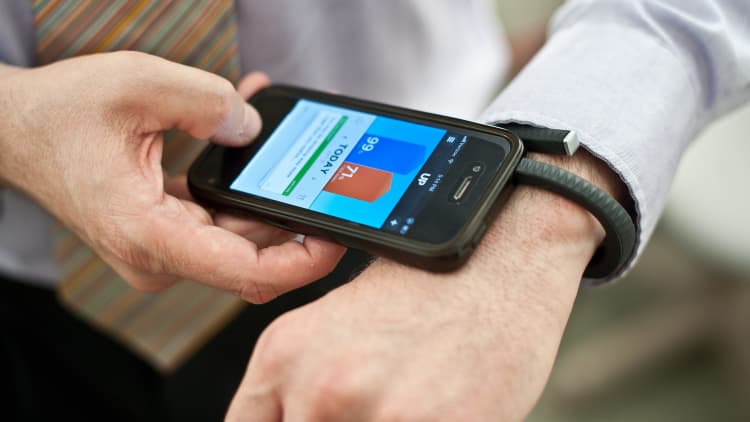
Wearable maker Jawbone has begun liquidation proceedings, said tech website The Information on Thursday, citing a person close to Jawbone. Founded in 1999, Jawbone was one of the early pioneers of Bluetooth wearables, even before the term "wearables" became widespread.
While its demise now may be at hand — the company declined to comment to several CNBC requests — Jawbone innovations live on and may extract future economic value.
Many of its products integrated military-grade noise-canceling technologies Jawbone developed in-house. The company's portfolio of patents may be worth anywhere from $12 million to $15 million and could be of value to tech giants like Google, Apple and Samsung, David Pratt, managing director of patent valuation company M-CAM International and CNBC's partner on the CNBC IQ 100 Index, wrote to CNBC in an email.
With a value once reaching as high as $3 billion, Jawbone attracted some big names like VC investors Sequoia Capital and Andreessen Horowitz; its board once featured Marissa Mayer.
And it has left a lasting impact on consumer tech. Where the company really made a name for itself was in wearable and portable technology. Here are three gadgets that Jawbone created which — for a time — were novel in design and out ahead of many other consumer tech companies.
2006: The Jawbone headset
An ear-worn Bluetooth headset, the Jawbone sported a sleek design in an age where most headsets were frumpy affairs that either couldn't hear well or included a long boom to better receive sound. The Jawbone had a textured exterior designed by Yves Béhar and included proprietary noise cancellation technology. Jawbone became so closely associated with the company, then called Aliph, that they eventually took their name from this product and became Jawbone.
2010: Jawbone Jambox
The company helped jump-start the portable speaker market with the Jambox, a portable speaker that connected wirelessly to mobile phones and combined sound quality with in-call noise canceling technology derived from its expertise in Bluetooth headsets. The unit ran entirely on an internal battery (an innovation at the time), connected via Bluetooth, was designed to be small enough to throw into a bag and could even take calls. It stood out in a sea of clunky, bulky counterparts with a unique design and different colors that "instantly spoke to the consumer," said Bob Hoyler, research analyst at Euromonitor International. "It certainly wasn't the first, but it was the one that brought the product to the mass market."
Jawbone continued to iterate on the design, eventually releasing the Big Jambox and the Mini Jambox, but the market soon became saturated as established manufacturers released their own take on the portable speaker, including Bose and Beats by Dre, now owned by Apple.
2011: Jawbone Up
Fresh off its successful Jambox line, the company released the Up, a sleek wrist-worn wearable designed to track exercises, issue move alerts and monitor sleep cycles. The associated smartphone app could show user stats, compare it with friends and even log food intake. Its nearest competitor, Fitbit, did not offer sleep tracking in most of its devices at the time. However, successors to the Up were plagued by delays and even withdrew it from circulation at one point while they sorted out some durability issues, while competitors like Fitbit began rolling out a range of devices designed to track sleep and game-ify fitness.
Still, the Up was hobbled by its premium price. The Up3 originally sold for $179.99, placing it firmly in the premium range. "That's almost smartwatch territory for something that doesn't do much more than a Fitbit Flex does for a lot less," said Hoyler.
But the company's renewed focus on wearables may have hastened its demise.
"The company pursued the wrong strategy in the face of Apple and Xiaomi fitness trackers," wrote Pratt in an email to CNBC. "Its best intellectual properties are strongly oriented to wireless audio systems, advanced multi-microphone arrays, noise suppression and voice sensors."


